
Sep 18, 2019 | Staying on Top, UpstateVibe365
It all started in 2009 with one quilt square mounted on the Oconee Heritage Center in Walhalla.

The Greater Easley Chamber of Commerce had a ribbon cutting for their new quilt square on September 13th.
Today, the Upstate Heritage Quilt Trail has more than 250 quilt panels mounted on barns, businesses, homes, and public buildings across Anderson, Oconee, and Pickens counties. One of the most recent squares was mounted on the building of the Greater Easley Chamber of Commerce on September 13th—a replica of a mid-19th century quilt pattern known as Noon Day Lilies.
The idea was based on similar quilt trails in Ohio, Kentucky, and Tennessee. Oconee County was the first county in South Carolina to embrace the quilt trail concept after a group of dedicated citizens came together to establish the Oconee Heritage Quilt Trail in an effort to promote Oconee County. The first quilt square was sponsored by the Wynward Point Ladies Group and was mounted on the Oconee Heritage Center in Walhalla in the fall of 2009.
The quilts are unique designs and each painted quilt panel is a copy of an existing quilt that usually has some historical connection with the sponsoring family or organization. The quilt panels are painted by volunteers on weather-resistant wooden panels using quality outdoor paint.
 The tagline of the project is, “Every Quilt Tells a Story, and Every Story Leads to a Discovery”—and the stories of each quilt can be found on the Upstate Heritage Quilt Trail website. The current owner of the quilt that is replicated on the Greater Easley Chamber of Commerce comes from several generations of Pickens County residents; the quilt was a prized possession of her grandmother, the daughter of a circuit rider preacher who established several churches in the area.
The tagline of the project is, “Every Quilt Tells a Story, and Every Story Leads to a Discovery”—and the stories of each quilt can be found on the Upstate Heritage Quilt Trail website. The current owner of the quilt that is replicated on the Greater Easley Chamber of Commerce comes from several generations of Pickens County residents; the quilt was a prized possession of her grandmother, the daughter of a circuit rider preacher who established several churches in the area.
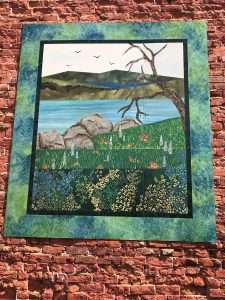
Resting Place, by Gail Sexton, is at 306 Main Street in Pickens
Another quilt, called “Resting Place,” is the design of Gail Sexton, who made her first quilt in 1971 but did not begin quilting in earnest until the mid-1980s. So, while many of the quilt squares have a historical significance, others are the creations of contemporary quilters who have taken an interest in keeping the art form alive.
A pdf map of the quilt trail, along with GPS coordinates, can also be found on the website. Please keep in mind that these quilt squares are on private property and should be viewed and photographed from public roads. Many owners may allow a closer look if you ask their permission.
A festival celebrating the 10th anniversary of the Upstate Heritage Quilt Trail—called the Airing of the Quilts—will be held in downtown Westminster on October 5th.
Article by Sherry Jackson, with updates by Sharon Purvis

Sep 11, 2019 | Staying on Top, UpstateVibe365
Did you know that there were more battles and skirmishes fought right here in South Carolina than in any other colony during the Revolutionary War? And you can visit the sites, immersing yourself in our state’s—and our country’s—history.
Dubbed “the turn of the tide of success” by Jefferson Davis, the battle of Kings Mountain was the first major patriot triumph after the British invasion of Charleston and was an important American victory. The significant battle took place on October 7, 1780 and although only an hour long, it changed the course of the Revolutionary War.
The 4000-acre park is one of the largest revolutionary war sites in the country. Located near Blacksburg in Cherokee County, the park features a 1.5 mile battle trail, an exhibit area, and a 26-minute film that shows every 45 minutes.
The park is free and is open daily from 9:00 a.m. until 5:00 p.m. (it stays open until 6:00 p.m. on weekends Memorial Day through Labor Day).
The battle at Cowpens was a major victory for colonial forces and was key to the surrender of British Commander Cornwallis that ultimately led to the end of the war in 1783.
that ultimately led to the end of the war in 1783.
The 845-acre park features a Visitor’s Center, the battlefield area, a walking trail, and an auto loop trail.
Check the web site for fees, hours of operation, special events, and park holidays.
This site actually is home to two Revolutionary War battle sites that claimed the lives of over one hundred settlers. The first  Southern battle of the war was fought here. The Visitor’s Center has a twenty minutes film which depicts the battles and an exhibit gallery.
Southern battle of the war was fought here. The Visitor’s Center has a twenty minutes film which depicts the battles and an exhibit gallery.
The Visitor’s Center is free and open daily from 9:00 a.m. until 5:00 p.m. except for New Year’s Day, Christmas Day, and Thanksgiving Day. The grounds are open daylight to dusk.
Check the web site for fees, hours of operation, special events, and park holidays.
This is considered to be one of the most important and heavily visited historical sites in South Carolina. With over 775 acres and 30 buildings, it’s steeped in Revolutionary history.
The Battle of Huck’s Defeat was an important event in the Revolutionary War and was fought at Brattonsville. In 1780, a British Legion under the command of Captain Christian Huck was dispatched by loyalist Lieutenant Colonel Turnbull to destroy Whig militia camps in the area. Huck was also given instruction by Turnbull to capture Colonel William Bratton (and others) who had just returned home to enlist more recruits for the war. The Whigs heard of this plan, rallied against the British soldiers and won the battle, killing Captain Huck in the process. This battle is believed to have revived the morale of the people in South Carolina and was the beginning of a series of victories including battles at Kings Mountain and Cowpens, which eventually led to the British surrendering at Yorktown in 1781.
Historic Brattonsville, located in York County, is open Tuesday through Saturday: 10 a.m. until 5 p.m. and Sunday from 1 p.m. until 5 p.m. Keep in mind, though, if you are going on a Saturday, the interpreters usually leave around 3 p.m. Check the web site for admission prices and special events.
The battle that took place at Musgrove Mill on August 19, 1780 was a short (about 30 minutes) but very bloody battle. In fact,  Isaac Shelby, a Colonel who fought both at Musgrove Mill and Kings Mountain stated in his memoirs that the battle at Musgrove Mill was the fiercest battle in which he ever fought. The brief battle was between a small detachment of Colonial Patriots and a larger group of British Loyalists. But despite the odds, the Patriots were victorious and the battle was considered an important turning point in the war.
Isaac Shelby, a Colonel who fought both at Musgrove Mill and Kings Mountain stated in his memoirs that the battle at Musgrove Mill was the fiercest battle in which he ever fought. The brief battle was between a small detachment of Colonial Patriots and a larger group of British Loyalists. But despite the odds, the Patriots were victorious and the battle was considered an important turning point in the war.
The park is free and is open daily from 9:00 a.m. until 6:00 p.m.
There were no revolutionary battles fought at Oconee Station, but its claim to fame is that it served as a military compound and trading post. The stone blockhouse was used as an outpost by the South Carolina State Militia from 1792 until 1799 as is the only remaining building of the fort Oconee Station.
Located near Roebuck, this plantation was established in 1765 from a 550-acre land grant. The Moore family, who owned Walnut Grove Plantation, were active Patriot supporters and allowed the militia to muster there during the war. Loyalist William Cunningham killed three Patriot soldiers sheltered at the plantation in 1781.
Walnut Grove is open Tuesday through Saturday from 11:00 a.m. until 5:00 p.m. and on Saturdays from 2:00 p.m. until 5:00 p.m. They are closed Mondays and holidays and hours change November through March so it’s best to check their website for hours and admission fees before you visit.
Also, as you are driving around, be on the lookout for historical markers. There are 495 U.S. Revolutionary War historical markers in South Carolina alone. For a complete list, visit the Historical Marker Database.
by Sherry Jackson

Sep 4, 2019 | Staying on Top, UpstateVibe365
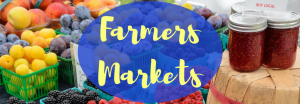
One of the best things about summer is the fresh produce at your local farmers market—juicy tomatoes, sweet corn, colorful peppers, refreshing cucumbers—and it’s a sad sign of the end of summer when they close up for the year. But don’t worry—there are some farmers markets in the Upstate that stay open through the fall and even into the winter, with lots of fall and winter vegetables like kale, winter squash, beets, cabbage, and more. So you can go from salad season to soup season, still using fresh, local ingredients!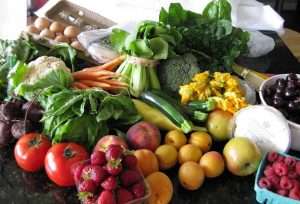
The Mauldin, Easley, and Palmetto (in Williamston) markets closed at the end of August, although there will be one more Palmetto Market at the 7th Annual Homesteading Festival on September 14th.
Several markets’ summer hours extend through the end of this month: Clemson’s is on Thursdays through the 26th; Fountain Inn, Simpsonville, Travelers Rest, and Pumpkintown all have Saturday market hours through the 28th of September.
The Greer and downtown Greenville markets will continue their Saturday hours through October 26th. The Abbeville Farmers Market, which operates once a month, has four remaining market dates in 2019.
 Although a lot of farmers markets do sell other items besides vegetables, meat, and eggs, Woodruff’s Farmers Market and Arts & Crafts Market welcomes a variety of vendors selling food items and non-food-related crafts each Friday from 2:00–6:00 p.m. through November 8th, and they officially end their season on November 15th with the Woodruff Christmas Stroll.
Although a lot of farmers markets do sell other items besides vegetables, meat, and eggs, Woodruff’s Farmers Market and Arts & Crafts Market welcomes a variety of vendors selling food items and non-food-related crafts each Friday from 2:00–6:00 p.m. through November 8th, and they officially end their season on November 15th with the Woodruff Christmas Stroll.
Gaffney Station Farmers Market’s summer schedule, with Tuesday and Thursday evening as well as Saturday morning, will continue for another week (through the 14th), and then it will only be Saturdays from 8:00 a.m. to noon through November. In addition to your usual farmers market produce items, Gaffney Station also sells other agricultural products such as Christmas trees, potted plants, ornamental shrubs, and firewood—and they are hosting a Farm to Table event at Old Paths Farm on October 12th (tickets can be purchased at the Gaffney Visitors Center & Art Gallery).
Hub City Farmers Market in Spartanburg runs its Saturday market through December 14th as well as mobile market stops through October 3rd. With its mission of  increasing the supply of and access to healthy, local food in Spartanburg, HCFM also runs an urban teaching farm, a community garden, and a seed-to-table enrichment program for classroom students to learn about food cultivation. Helping to fund those initiatives is a Farm-to-Table dinner on October 17th.
increasing the supply of and access to healthy, local food in Spartanburg, HCFM also runs an urban teaching farm, a community garden, and a seed-to-table enrichment program for classroom students to learn about food cultivation. Helping to fund those initiatives is a Farm-to-Table dinner on October 17th.
Greenwood’s Uptown Market is open year-round (closed only on December 25th and January 1st), and they provide a handy chart showing produce availability by month. Starting in October, the market switches to winter hours—10:00 a.m.–1:00 p.m.—both on Wednesdays and Saturdays. The market awards $10 in Healthy Bucks for SNAP users per $5 spent, distributed on Wednesdays; also on select Wednesdays, healthy recipe samples are available, with recipe cards so you can prepare the dishes at home.
Farmers markets are one of the best ways to support local farmers—so even if your local market is closed for the season, why not take a drive this weekend to visit another one?
by Sharon Purvis

Aug 28, 2019 | Staying on Top, Uncategorized, UpstateVibe365
One Upstate town is situated completely within a National Historical District, so history—literally speaking—can be found on each one of its streets. 
Located in the northwest corner of the Upstate, the Pendleton Historic District covers an area of over 6,300 acres and includes the entire town of Pendleton, its immediate surroundings and a large tract of land that stretches west towards Lake Hartwell. One of the largest historical districts in the nation, it was listed on the National Register of Historic Places in 1970.
In all, the Pendleton Historical District includes more than a dozen historic sites, and over 50 buildings of eighteenth- and nineteenth-century significance remain, the majority of which are within the town limits of Pendleton.

The Village Green is used for a variety of community events.
A community of approximately 3000 residents, Pendleton remains relatively unchanged from when it was first laid out as the county seat of what was originally known as Old Pendleton District (present-day Anderson, Oconee and Pickens Counties) in 1790.
In the center of town, the charming Village Green, surrounded by a lively business district of shops and restaurants, serves as the focal point. Dogwoods line many streets, and massive cedars and oaks are dominant throughout the area.
On one corner of the Green is Hunter’s Store, the heart of commerce in 1850 and now home to the Lake Hartwell

Hunter’s Store houses the Lake Hartwell Country visitors center.
Country visitors center. The commission, which serves a three-county region, houses a visitor information center as well as the largest collection of local history and genealogy north of the city of Columbia.
In 1826, construction began on Farmers’ Hall, which stands on the southwest corner of the Green. It was initially designed to serve as the then Pendleton District’s courthouse, but the county seat was moved before the building was completed.
Local farmers completed construction of the building as the Farmer’s Society Meeting Hall in 1828, and it has been in use by the organization ever since, making it the oldest continuously operating Farmer’s Hall in the nation. The historic building also features a restaurant – 1826 On The Green.

Farmers Society Meeting Hall
Events are held on the Green throughout the year, the most notable of which is the annual Historic Pendleton Spring Jubilee. Held the first full weekend in April, the Jubilee—which has become a sort of rite of spring—is an award-winning, juried art and crafts show that attracts thousands of visitors each year. According to event organizers, over 300 artisans vie for each of the 100 coveted spaces.
Historic walking tours are available every 2nd Friday and Saturday of the month, and self-guided walking tour brochures of the town of Pendleton are available at the visitor center in Hunter’s Store.
Getting there:
Pendleton Historic District Village Green is located at 125 E. Queen St. in Pendleton, S.C.

Old Stone Church
Worth a look:
Located just outside Pendleton, the Old Stone Church and Cemetery and the plantation homes of Woodburn and Ashtabula, each of which are listed individually on the National Register, are part of the Pendleton Historic District.
by James Richardson

Aug 21, 2019 | Staying on Top, UpstateVibe365
When you think of the mountains of Upstate South Carolina, do you think of tea growing country? If not, Steve and Jennifer  Lorch of Table Rock Tea Company want to change that.
Lorch of Table Rock Tea Company want to change that.
Right now, both Steve and Jennifer have day jobs while they live and work on the property in Pumpkintown, intentionally growing the business slowly and steadily, with just an acre of tea plants right now. But they have plans to build up to 5 acres in the next few years, and in 10 years or so, there are plans to purchase the neighboring property, which will give them more land to plant and another building to house a café and bakery.
Right now, though, the focus is on germinating the seeds from the plants they have so that all of the future plants will come from their own property, without having to import seeds—and on growing, making, and selling tea.
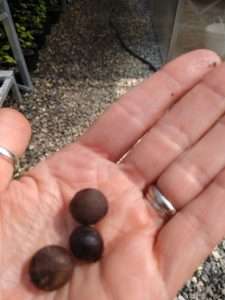
Mature seeds of the tea plant
Making the most of other income-generating opportunities, Table Rock also sells honey from the bees they keep to pollinate the tea plants in their Christmas gift boxes, and there is a camp site on the property that is rented out nearly every weekend of the year.
Additionally, the Lorches have created a tea consortium so that others can help them grow and process more tea than they can do on their own. Because that one acre is all the two of them with their day jobs want to manage, the consortium allows anyone within an hour radius to buy plants from the Table Rock greenhouse. “They own the land, they own the plants, and we buy the leaves back from them,” Jennifer says. The hour radius allows for the freshest leaves to be used to make the tea.
The seeds are harvested in November, right when the plants go dormant for the winter, and they are mass-germinated in bins in the greenhouse: an inch of soil, 1,000 seeds on top of that, and then another inch of soil. The bins are covered and placed in a smaller greenhouse inside of the greenhouse, where they stay warm through the winter before the little plants pop out in the spring.
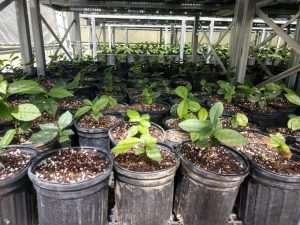
Around 20,000 plants will survive to be planted in the ground, of which 5,000 will be sold to tea consortium members.
The spring volunteer days bring students and visitors to the property to help plant the seedlings in pots to keep growing for another year in the greenhouse before they can be sold to the consortium or planted on the property. Future Farmers of America students come for a couple of hours and can plant 1400 plants in that time. “We couldn’t do it without them,” Jennifer says.
Harvesting the tea is a labor-intensive job, as it’s done by hand to get only the bud, or “flush” of new leaves for the best flavor. After harvest, the leaves go on a withering bed for 10-20 hours—just so the leaves get limp, but not dry. What happens next depends on whether they are going to be made into green tea, Oolong tea, or black tea—but all of those tea types, as well as white and yellow tea, start with the same leaves.
Steve and Jennifer do all of the harvesting and processing on their own for now, but they are dreaming big for the future. “Here’s our big dream: We want the Upstate to be known as tea country, just like Napa Valley is known as wine country,” Jennifer says.
If you’re interested in visiting yourself, click here to find out how!
Some tea facts:
by Sharon Purvis
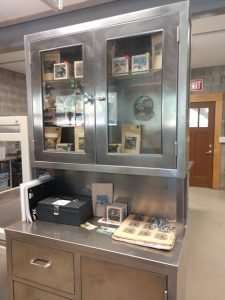
A sampling of the products for sale at Table Rock Tea Company
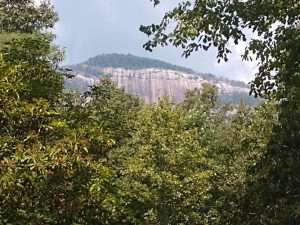
View of Table Rock from the camp site.

Aug 14, 2019 | Staying on Top, UpstateVibe365
Sure, the Woodstock 50th anniversary festival may have been cancelled, but we have our own three-day camping music  festival right here in the Upstate this weekend! Since we’re in the mountains, the music has a distinctly grassy flavor, covering a wide range of music that falls into the Americana genre.
festival right here in the Upstate this weekend! Since we’re in the mountains, the music has a distinctly grassy flavor, covering a wide range of music that falls into the Americana genre.
Pumpkinstock is the brain child of long-time music festival promoter Pat Mulkey, and although the idea for this festival came because he wanted to commemorate the 50th anniversary of Woodstock—particularly with the on again, off again, and now definitely off again roller coaster ride of the big anniversary show in New York—he’s calling this the inaugural event, hoping to do it annually.
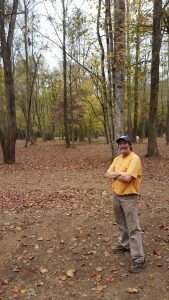
Pat Mulkey on the Bonfire Music Fest property
The festival is hosted by Mulkey’s Bonfire Music Fest, a campground in Pumpkintown that was developed especially for camping music festivals, with both RV sites and tent sites. This will be the second festival held on the property, after a very soggy one a couple of years ago where it rained all weekend. The forecast for this weekend is much more favorable for an outdoor music festival—and even if it’s a little hot, festival goers are welcome to cool off in the river on the property (but no glass in or near the river, please!).
Three-day tent or RV passes as well as single-day passes (no single-day camping) can be purchased online. There are no hookups for RVs, but you can bring a generator, and there are plenty of Port-a-Johns around the camp sites. The festival is kid- and pet-friendly (with a $10 pet fee that will be donated to the Pickens County Humane Society), and campers can bring their own food and drinks or buy meals and beer and wine from food trucks that will be onsite.
Gates open to campers at 10:00 a.m. on Friday, with music getting underway at 4:00 p.m. until right before midnight. Saturday’s lineup starts playing at noon, and on Sunday the music starts goes from 1:00 to 7:00 p.m.
The Grass is Dead, a bluegrass Grateful Dead cover band led by Billy Gilmore, is the host band for the festival, and the West End String Band is “the official campground band.”
Other bands include:
Songs from the Road Band, a folky, grassy band
Fresh Hops, which features a fiddle, but also some funky fusion and just plain fun
Marvin King Revue, definitely more blue than grass
The Raelyn Nelson band, fronted by Willie Nelson’s granddaughter
JGBCB—Jerry Garcia Cover Band, which is pretty self-descriptive
Mama Said String Band, an almost-all-female new-grass band (only the fiddle player is male)
The Complete Music Lineup for Pumpkinstock:
Friday

Marvin King Revue
RJ Galloway
Westend String Band
Marvin King Revue
Jerry Garcia Band Cover Band JGBCB
The Grass Is Dead
Saturday
RJ Galloway
My Girl My Whiskey and Me

Sunflowers and Sin
Shuffel Button
Kelly Jo and Phat Lip
Sunflowers and Sin
Mama Said String Band
Fresh Hopps Band
Raelyn Nelson Band
Billy Gilmore and Grass Is Dead
Bonfire Jam
Sunday
Mama Said String Band
Some Very Special Guests
West End String Band—Our Official Campground Band!
Rev Jeff Mosier and Friends and Family Jam
Songs from the Road Jam
The Grass is Dead’s Goodbye Jam
Pickin’ at the Fire
This schedule is subject to change, but regardless of what the lineup looks like, a good time will be had by all.


 The tagline of the project is, “Every Quilt Tells a Story, and Every Story Leads to a Discovery”—and the stories of each quilt can be found on the Upstate Heritage Quilt Trail website. The current owner of the quilt that is replicated on the Greater Easley Chamber of Commerce comes from several generations of Pickens County residents; the quilt was a prized possession of her grandmother, the daughter of a circuit rider preacher who established several churches in the area.
The tagline of the project is, “Every Quilt Tells a Story, and Every Story Leads to a Discovery”—and the stories of each quilt can be found on the Upstate Heritage Quilt Trail website. The current owner of the quilt that is replicated on the Greater Easley Chamber of Commerce comes from several generations of Pickens County residents; the quilt was a prized possession of her grandmother, the daughter of a circuit rider preacher who established several churches in the area.
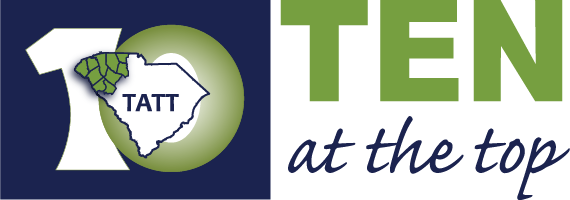

 Southern battle of the war was fought here. The Visitor’s Center has a twenty minutes film which depicts the battles and an exhibit gallery.
Southern battle of the war was fought here. The Visitor’s Center has a twenty minutes film which depicts the battles and an exhibit gallery. Isaac Shelby, a Colonel who fought both at Musgrove Mill and Kings Mountain stated in his memoirs that the battle at Musgrove Mill was the fiercest battle in which he ever fought. The brief battle was between a small detachment of Colonial Patriots and a larger group of British Loyalists. But despite the odds, the Patriots were victorious and the battle was considered an important turning point in the war.
Isaac Shelby, a Colonel who fought both at Musgrove Mill and Kings Mountain stated in his memoirs that the battle at Musgrove Mill was the fiercest battle in which he ever fought. The brief battle was between a small detachment of Colonial Patriots and a larger group of British Loyalists. But despite the odds, the Patriots were victorious and the battle was considered an important turning point in the war.


 Although a lot of farmers markets do sell other items besides vegetables, meat, and eggs, Woodruff’s
Although a lot of farmers markets do sell other items besides vegetables, meat, and eggs, Woodruff’s  increasing the supply of and access to healthy, local food in Spartanburg, HCFM also runs an
increasing the supply of and access to healthy, local food in Spartanburg, HCFM also runs an 







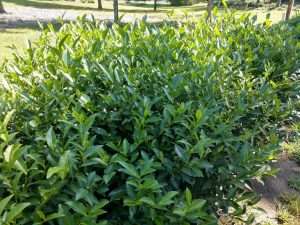



 festival right here in the Upstate this weekend! Since we’re in the mountains, the music has a distinctly grassy flavor, covering a wide range of music that falls into the Americana genre.
festival right here in the Upstate this weekend! Since we’re in the mountains, the music has a distinctly grassy flavor, covering a wide range of music that falls into the Americana genre.



